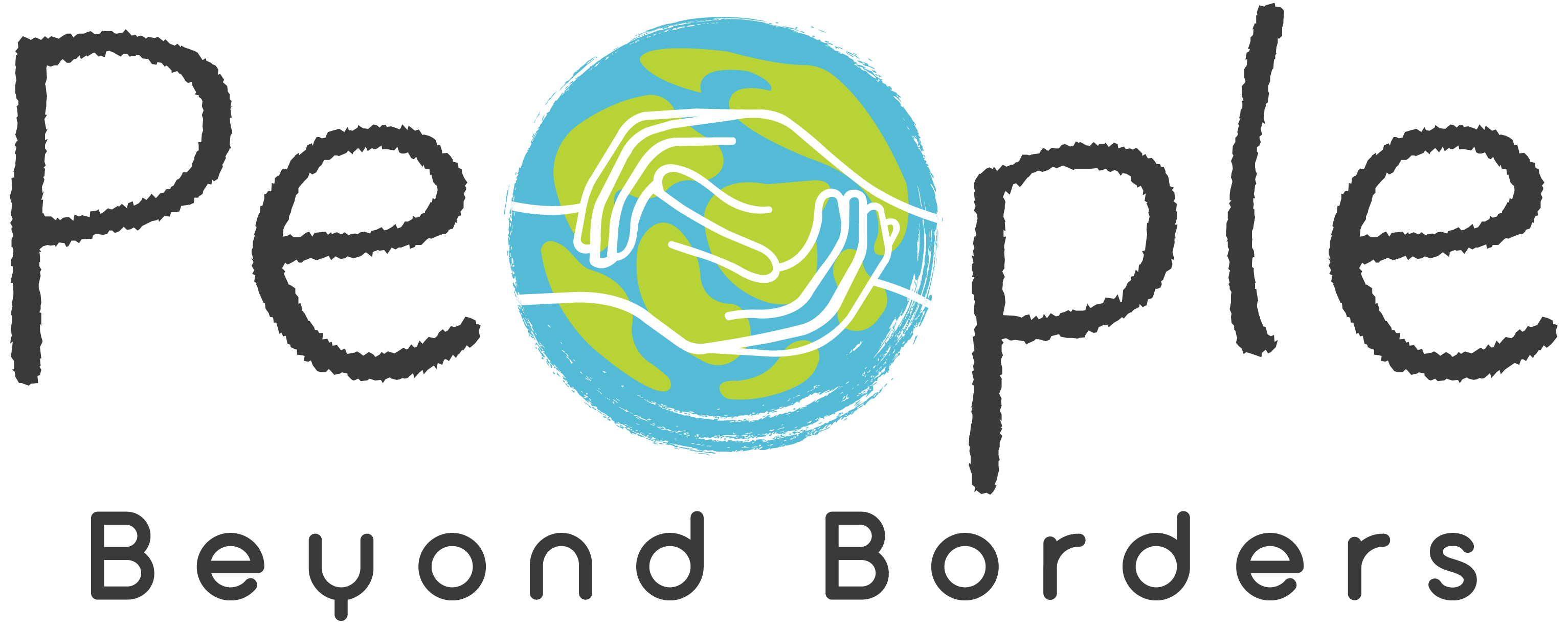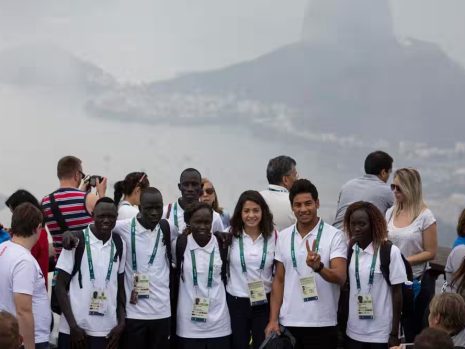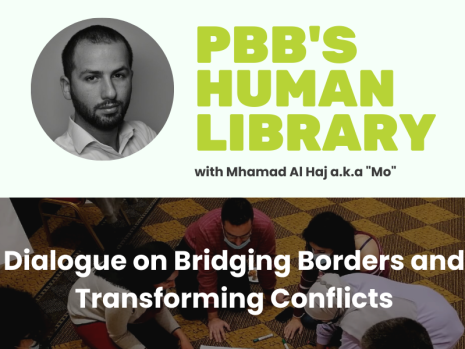THE CONFLICT BETWEEN Myanmar’s Karen ethnic minority and the state military has lasted over 60 years with periodic truces and is often described as the world’s longest civil war.
The Karen are among 135 ethnic minority groups recognized by the Myanmar government. Many ethnic minorities say the junta has violently oppressed and marginalized them since the country’s independence in 1948. Some, including the Karen, have fought for their cultural identity, political autonomy and territorial integrity. The Karen conflict has forced hundreds of thousands to flee across the border to Thailand, where many continue to live in limbo.
Karen women have faced particular difficulties during the years of conflict, often becoming pawns of the brutal warfare between the armed rebel groups and the government forces.
“Nobel Nok Dah,” a 2015 documentary that screened recently at the AtropoFest in Prague, portrays the lives of three Karen refugee women from Myanmar named Nobel, Nok and Dah. The women share their experiences of life in exile, forced labor in Thailand, their lifelong fights against gender inequality, being resettled in the U.S. and their hopes for the future.
Co-directors Emily Hong, Miasarah Lai and Mariangela Mihai portray their stories through the lens of “ethno-fiction” – a blend of documentary and fictional film genres – and explore the complex links between gender, cultural identity and sense of belonging.
Despite Myanmar’s recent period of political reform and a 2012 cease-fire with the Karen National Union (KNU), the main political representation of the community, most Karen refugees have not been able to return. For many, like the three women in the film, resettlement in a third country is the only meaningful chance at a fresh start. Their experiences convey the political complexities of Myanmar, a country where many ethnic communities like the Karen seek autonomy from the government.
How has the conflict affected Karen people, particularly women?
Mariangela Mihai: As is the case with territories long-engaged in armed resistance against dominant governments, for the Karen too the main challenges have been multidimensional: from their dispersal as political refugees seeking shelter in neighboring countries and sometimes resettling in places like the U.S. and Australia; to the lack of access to fair opportunities within Burma; to the impossibility of getting an education, while on the move or under attack; to the loss of land and the meager economic resources available for development resulting from it. In such a context, women tend to bear a great deal of the burden and often times sacrifice their well beings for their families and communities. One theme that I heard over and over from Karen women refugees while I was working with the Atlanta International Refugee Committee was the issue of education. Many of them, from high school students, to professionals, to stay at home mothers, spoke of their ardent desire to one day go back to the refugee camps they lived in and maybe one day to their home villages, to help their communities.
Has the situation for displaced Karen communities and those who have returned to their homes improved under the new government? What are the main obstacles for these communities to be able to return home?
Emily Hong: The first official return of refugees [to Myanmar] occurred in October 2016 and the process was far from smooth. About a quarter of the almost 100 refugees backed out at the last minute. Some had security concerns, such as land mines and the outbreak of conflict between the Border Guard Force and the Myanmar army, while others remain concerned about livelihoods, land and education. Some organizations have questioned whether the current context – donor-driven pressure to reduce rations and access to services in camps, in addition to ongoing clashes inside the country – allow the possibility of genuine voluntary returns.
Have gender rights improved, and are they accessible to Karen and other ethnic minority women?
Hong: Regardless of the promises of Aung San Suu Kyi and her party, the National League for Democracy, most people outside Yangon report that not much has changed for ethnic and indigenous people. In cease-fire areas, such as the Karen state, people suffer from intensified land grabbing. In Kachin and northern Shan States, the war is at its worst since a new wave of conflict broke out in 2011, when government forces broke the cease-fire agreements with the armed groups, and the situation has been made worse, due to China returning refugees who fled an IDP camp near its border in early 2017.
At the beginning of the film, Nobel mentions that in the society where she grew up, women are scared to speak up. When Nobel moves to New York, she realizes that in American culture, she must speak up to be heard. How do you believe resettlement in the U.S. has impacted Nobel, Nok and Dah’s perceptions of womanhood and self?
Hong: In the film, we learn all the ways that Nobel, Nok, and Dah’s views have been profoundly shaped by their cross-cultural experiences in Burma, Thailand, and the U.S. While many differences emerged from the hours-long oral histories that we conducted with the three women, there was one compelling common thread: all three of them have made very conscious decisions about which aspects of Karen culture and American culture they want to embody or pass on to their children. This was especially true for their reflections on self and womanhood, in particular, what it means to be a good daughter, sister, mother.
Mihai: I intimately connect to Nobel’s remark. As a Romanian immigrant in the U.S., I distinctly remember coming to the same realization. While Romanian default attitude is one of repression and self-silencing, in the U.S., speaking up is not only possible but also of consequence. This paradigm shift can have an empowering effect, if understood early. Nobel has taken this idea of speaking up very seriously over the years. As I follow her educational and life trajectory via social media, I notice her passion to help Karen communities is always supplemented by an understanding of how to garnish American support for her projects.
What are the main lessons here that the U.S., Europe and other countries that are usually destinations for asylum seekers can learn in effective resettlement and integration?
Mihai: In my work with U.S. resettlement agencies in Clarkston, Georgia, I have noticed the following issues. First, the arrival in resettlement destinations is the beginning of a new set of challenges, and not the end of difficulties.
Second, resettlement agencies do their best with limited human and financial resources. However, organizations could benefit from social scientists’ insights. For example, commonly, refugees from opposite sides of armed conflicts are resettled in the same U.S. neighborhoods and apartment complexes. Adequate research could avoid these traumatic experiences.
Third, resettlement agencies prioritize trainings for refugees’ self-sufficiency – i.e., the ability to work and cover expenses – to reduce government expenditures. However, this strategy traps refugees in low pay and long-hours jobs. In Atlanta, many Burmese refugees end up working overnight shifts in chicken factories with little opportunity to attend English classes. Fourth, rather than perceived as essential, English classes are often offered as a luxurious addition to the agencies’ main operations.
Despite stereotypes about women’s traditional role in society, there is a strong Karen women’s movement, especially in the diaspora communities. Historically, how have women been treated within Karen societies?
Hong: Many Karen societies have traditionally been matrilineal, with husbands moving to their wives’ villages, and women afforded equal inheritance and high status. However, over time, patriarchy and authoritarianism have eroded the customary power and autonomy of women.
How can the voice of Karen women be amplified?
Hong: I myself have been witness to conversations in movement spaces in which men cut short debates on gender equality with the argument that the fight for democracy and ethnic equality should come first, and women’s rights, later. But thankfully, women’s organizations from Burma have been very adept at keeping women’s perspectives front and center—whether it’s revealing the ways that women are disproportionately affected by destructive development, as HI Burma does, or showing that women’s participation in the peace process is necessary for a lasting peace, such as through the Alliance for Gender Inclusion in the Peace Process.
The Karen people have protected their culture and language for decades, but with tens of thousands displaced around the world, they remain at risk of losing their cultural heritage. What is the role of oral history in keeping alive the cultural heritage of displaced communities?
Mihai: The anxiety small dispersed communities, such as the Karen, feel when it comes to the issue of identity is indeed of much consequence. While I was working with refugee communities from Burma resettled in Atlanta, GA, one of the recurring remarks resettlement agencies and allied workers offered was “Why don’t the Burmese people flock together?” As in, why do they self-segregate in public meetings and during work and educational opportunities. This naive question was asked so frequently due to a misunderstanding about the different kinds of plights and struggles refugees from Burma had faced. At the same time the fact that Karen, Karenni, Shan, and Mon tended to self-segregate reveals the answer to your question: they were merely trying to protect their cultural and linguistic identity. In contexts of displacement, and not only, oral history and the power of storytelling can be garnished as a political tool which can enable communities to recover lost pieces of identity from their collective memory as well as passing them for safekeeping to coming generations.
The film challenges the current mainstream narrative around refugees. In times when their plight has been capitalized and politicized, how important is to provide more humane and complex perceptions on refugees?
Mihai: Unfortunately, there is a common tendency to “mistrust refugees” among the Western world. No matter refugees undergo years of gruelling “vetting” by the resettlement agencies. No matter, their bodies and personas become sites from which “proof” of suffering, marginalisation and persecution is required over and over. No matter, they often wait for years in refugee camps, suspending their futures and uncertain of their final destinations. The western subject tends to not believe, to not trust, unless it sees the wounds still bleeding… until it sees in black and white the symbols of what the West deems as “acceptable proof of suffering.
To listen to individual stories, is to connect personally from human to human. That is why, narratives such as Nobel Nok Dah are necessary. At the same time, even within this context, there’s a commodification of such counter-narratives that takes us back within that vicious cycle: show us your struggle, albeit in a different way, one which we can stomach, one which we can understand from our viewpoint. This expectation and the misconceptions that come with it have ugly and devastating consequences on refugees lives.
Policies [like Donald Trump’s executive order on immigration and refugees] are fed by lack of understanding of differences and the kind of xenophobia that is born when people do not take the time to listen to each others’ stories. That is why, even though we can never fully escape the problems that come with narrating refugee stories, we should continue doing so, learning more along the way and perhaps also teaching others a thing or two about our shared humanity that knows no borders.
This interview was conducted by email and has been edited for length and clarity.
This story has been updated to use Mariangela Mihai’s preferred name and provide more context to several of the filmmakers’ answers.



